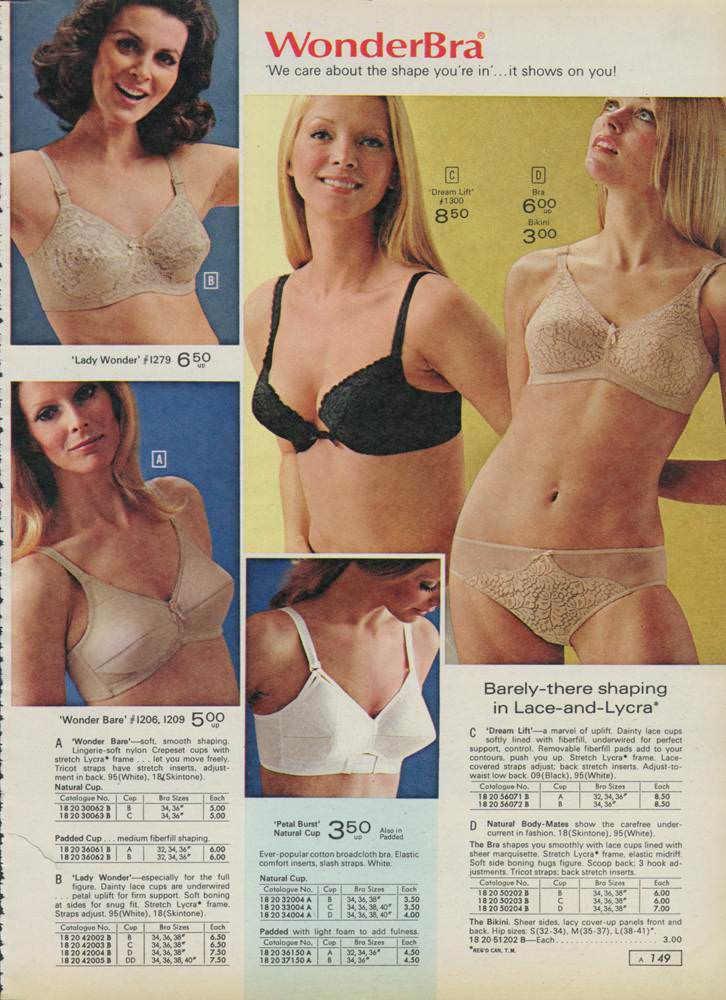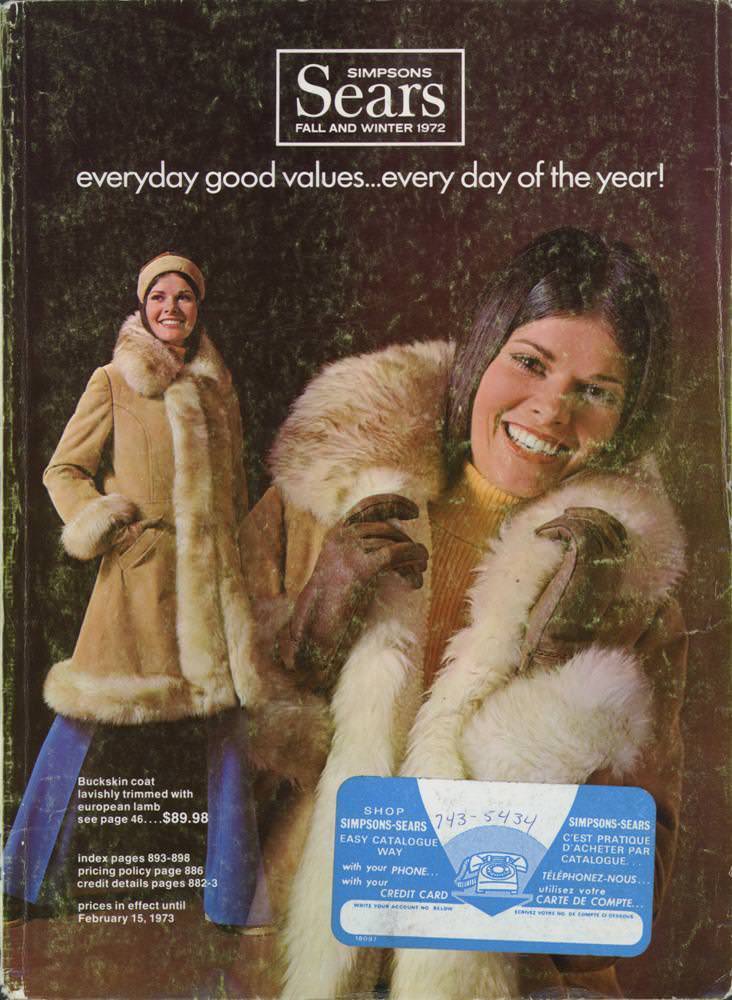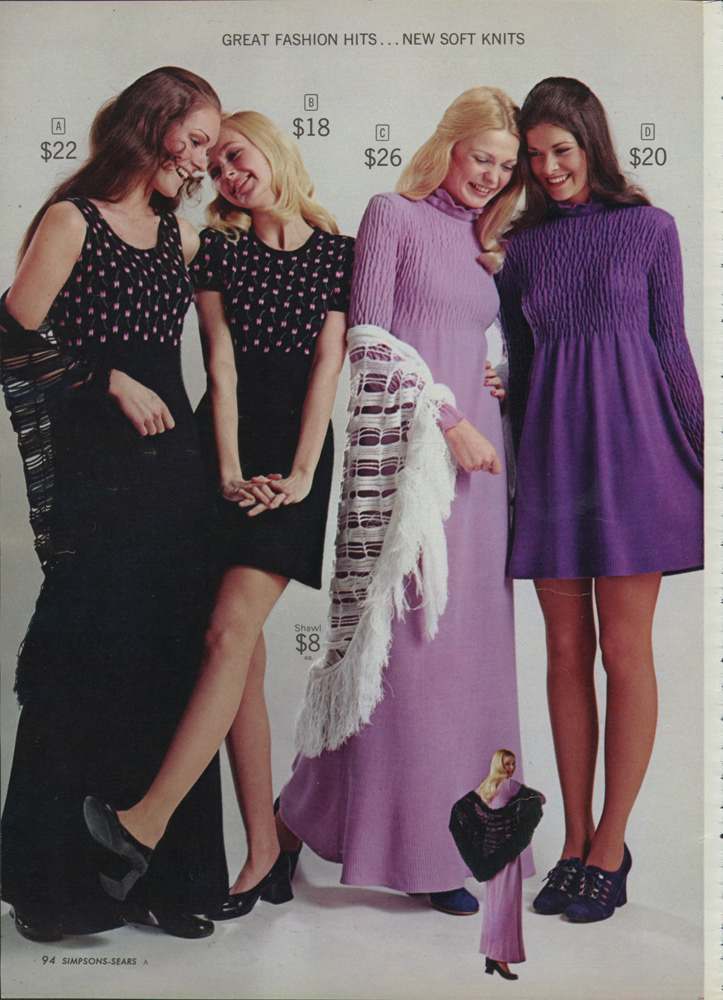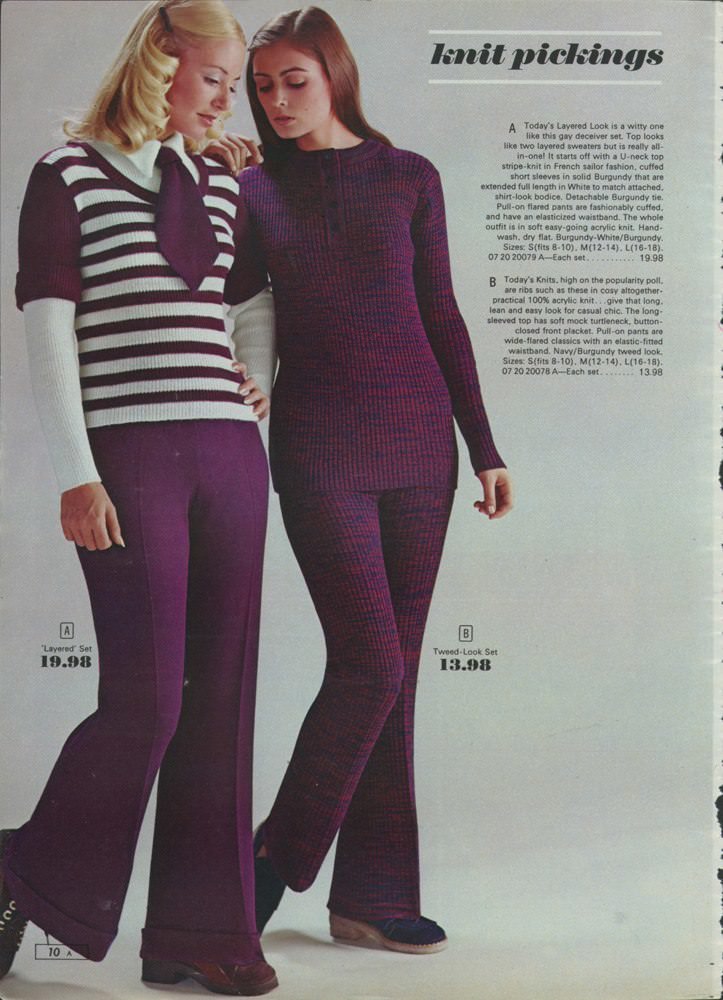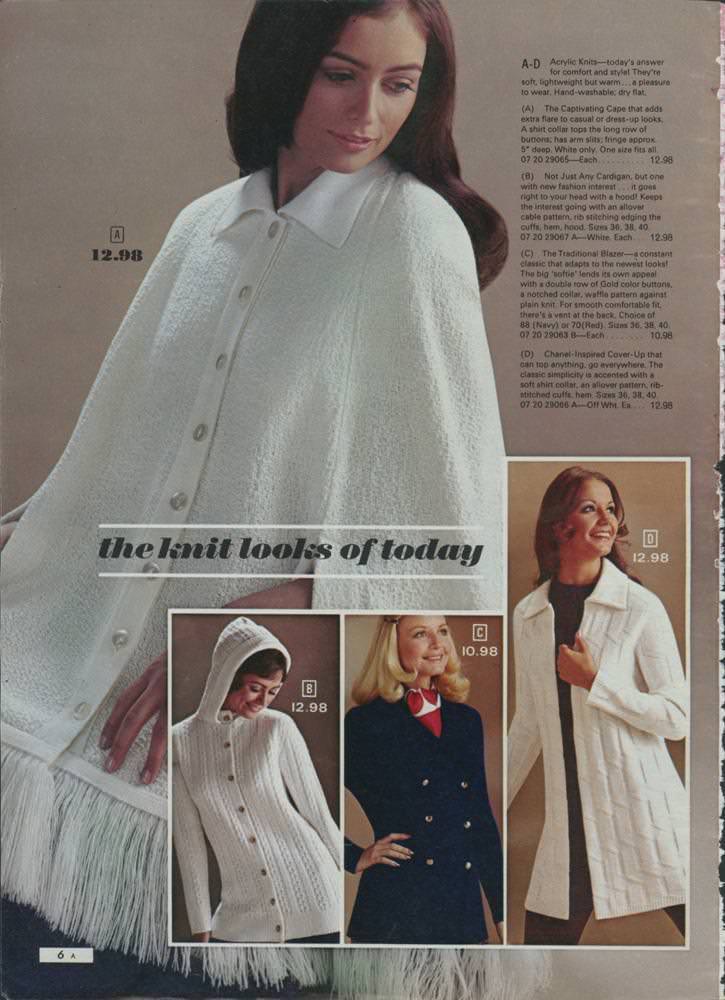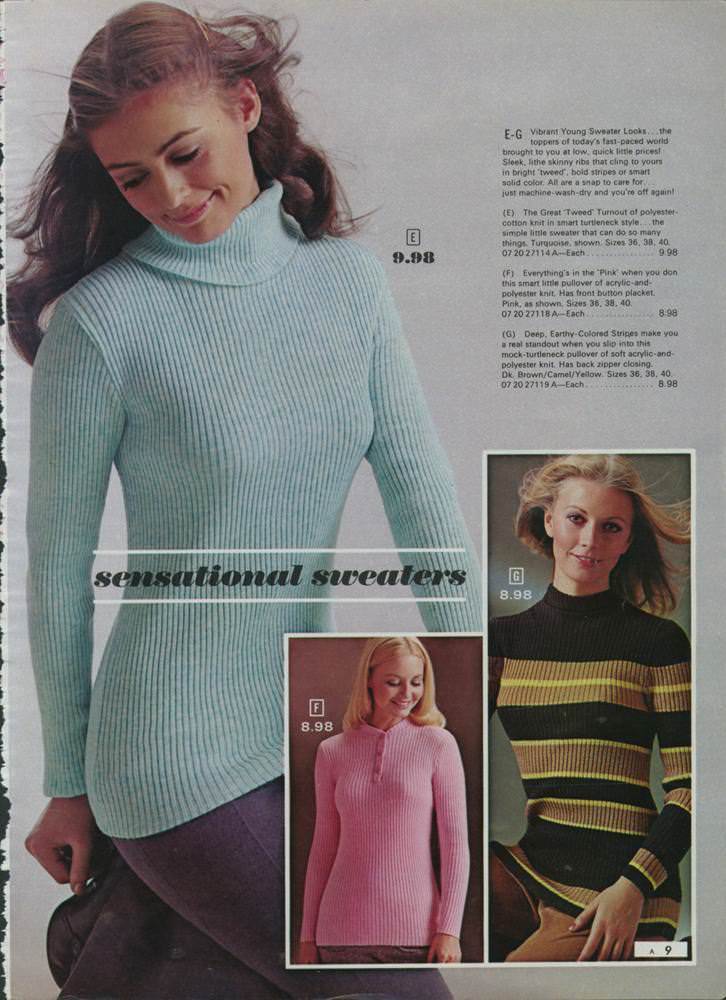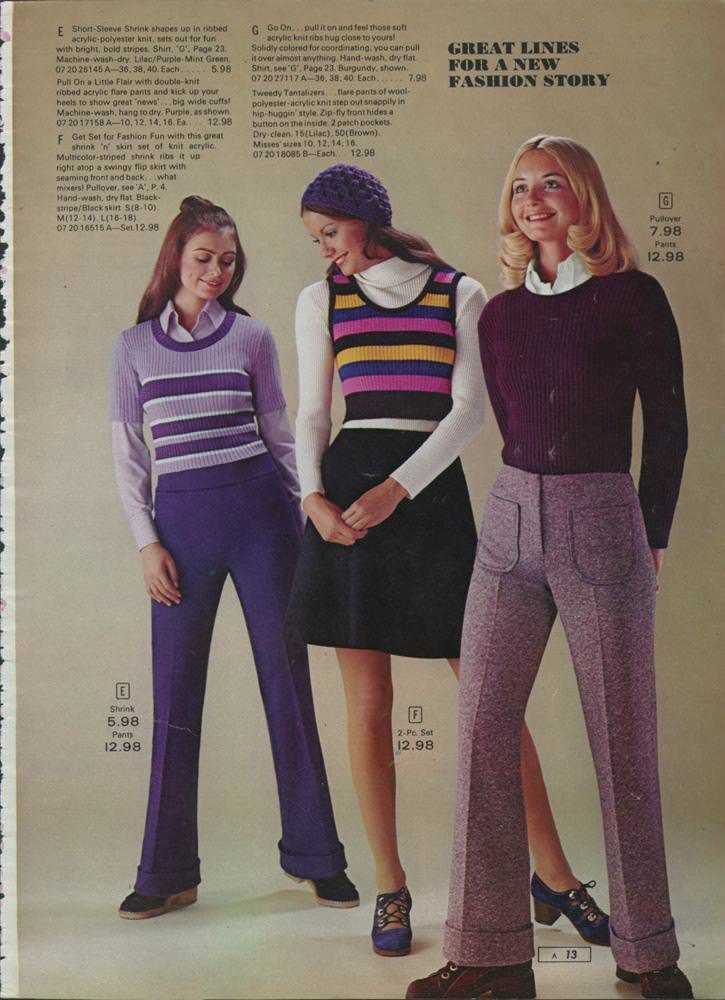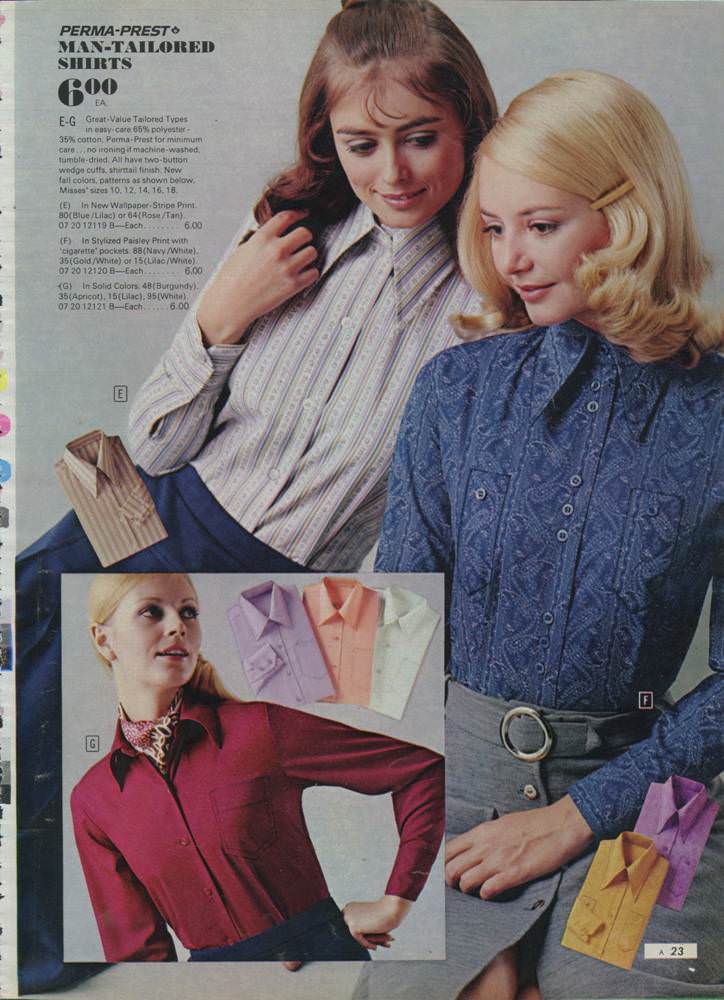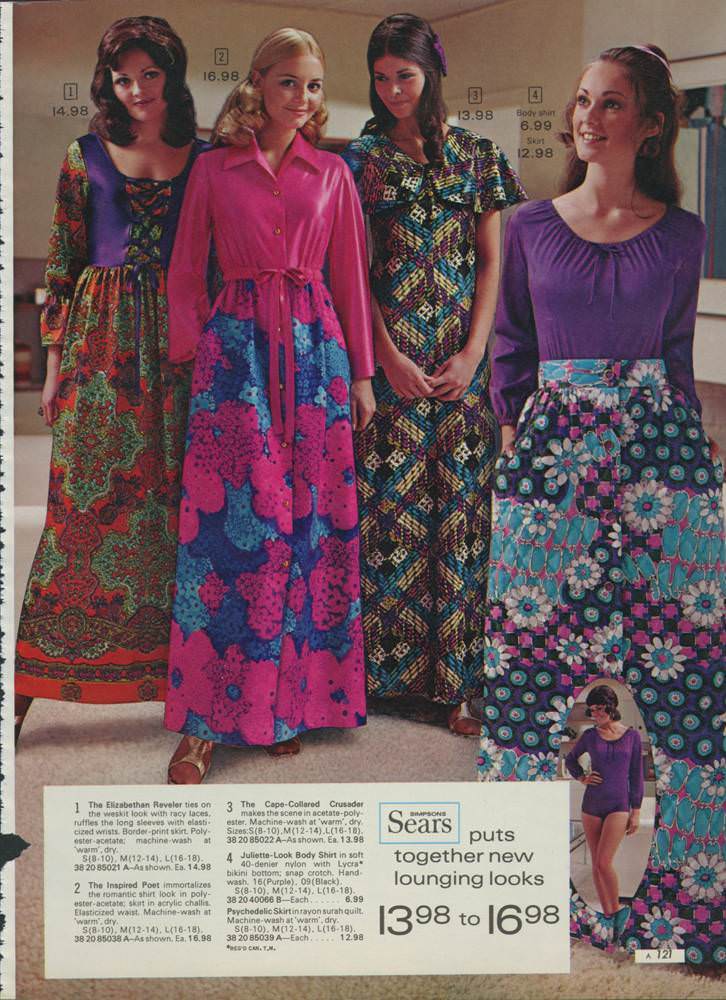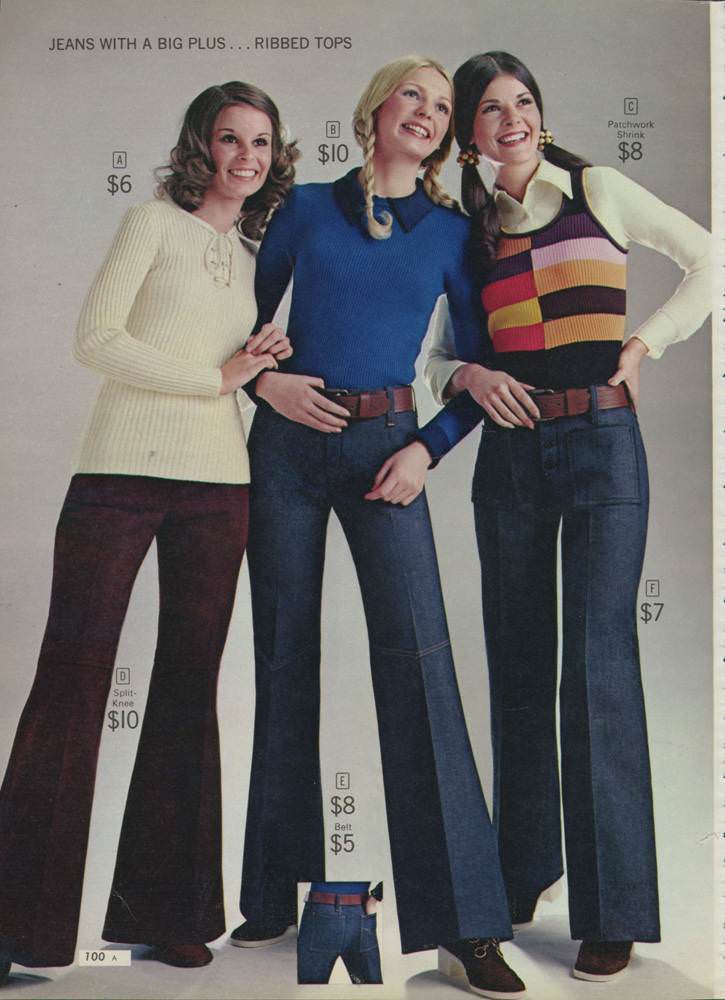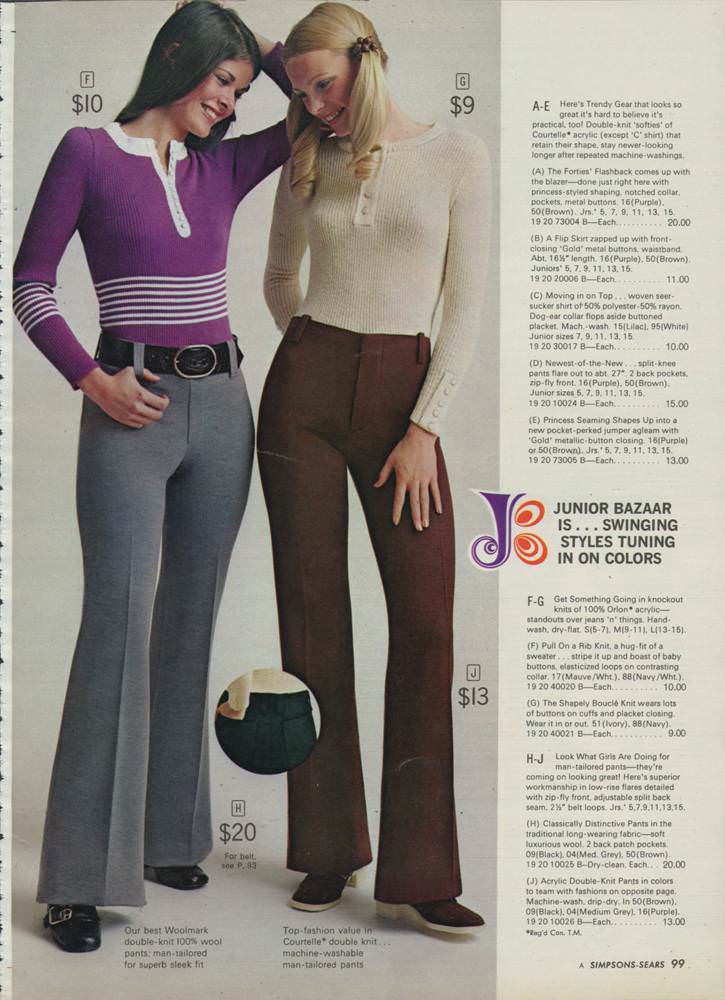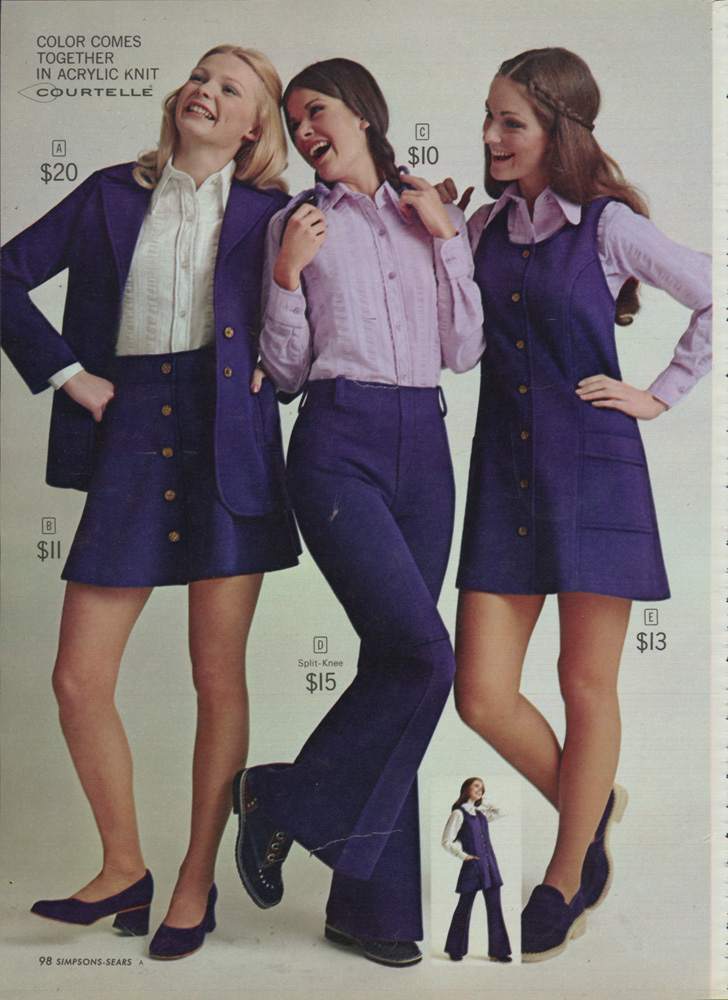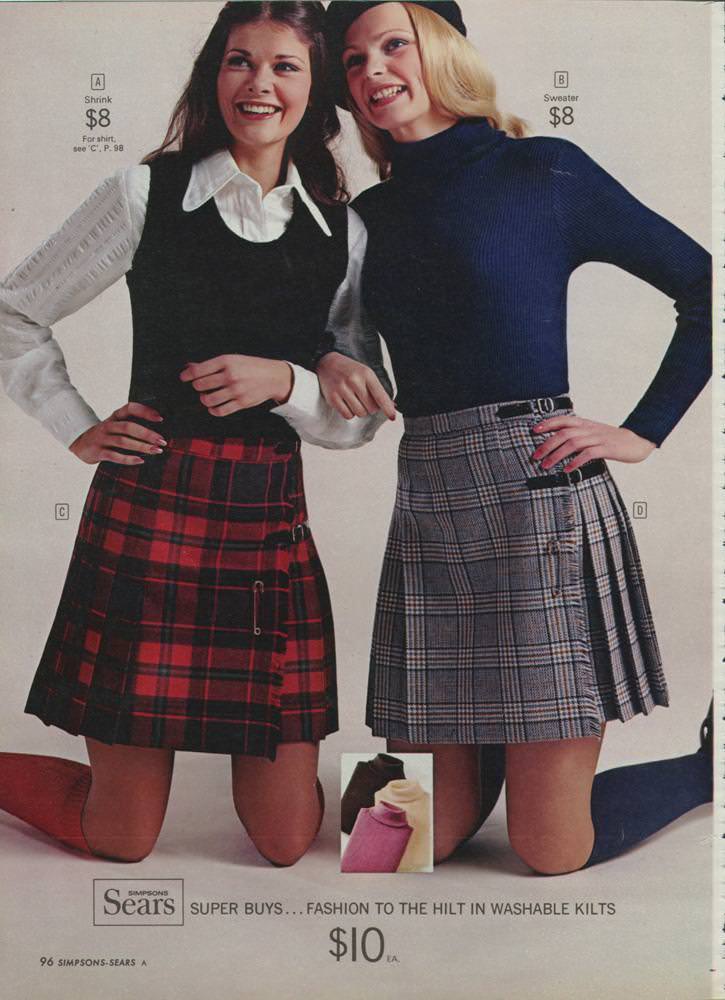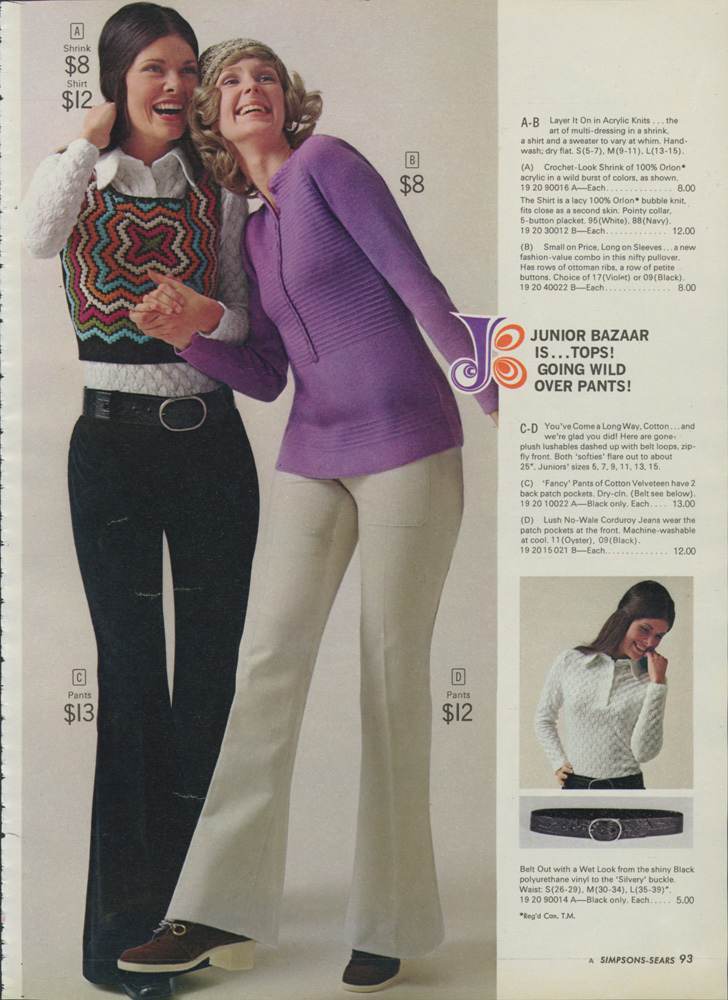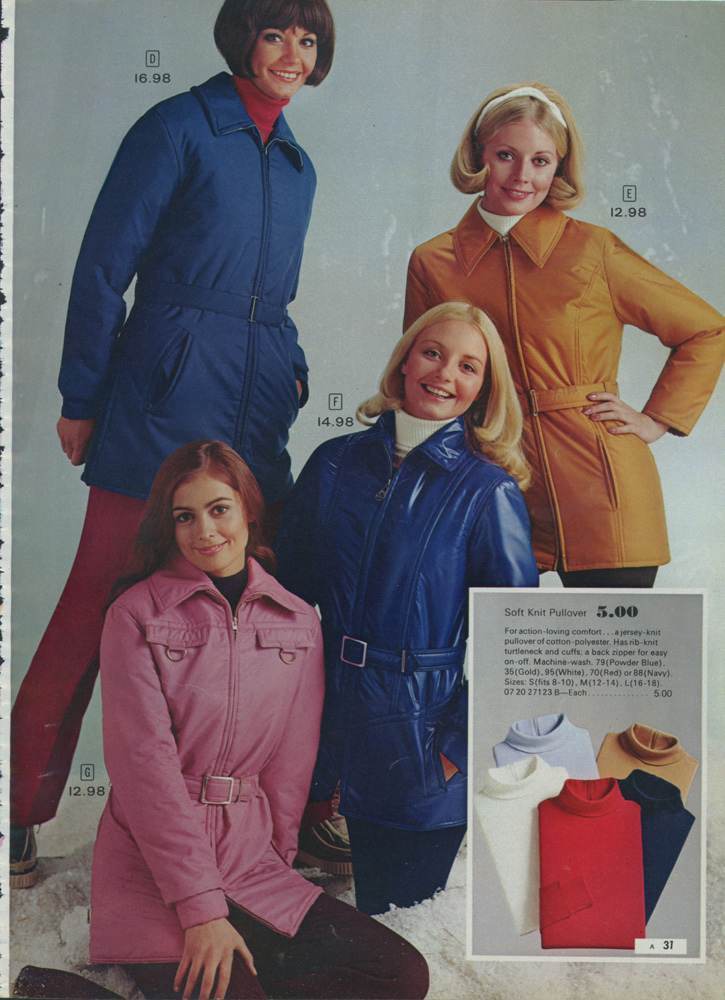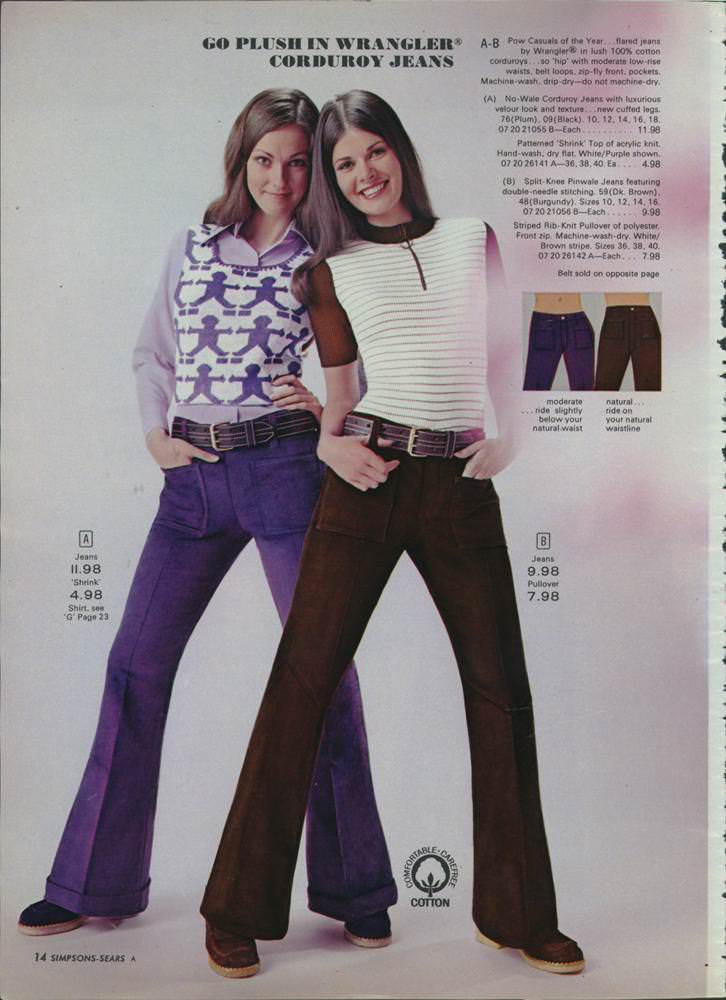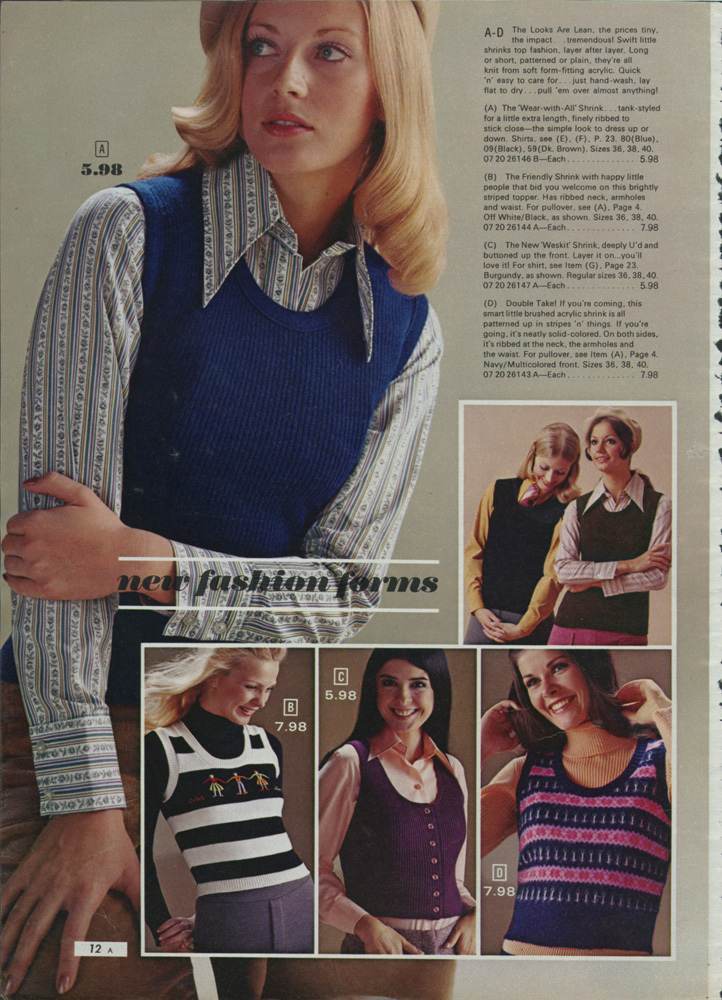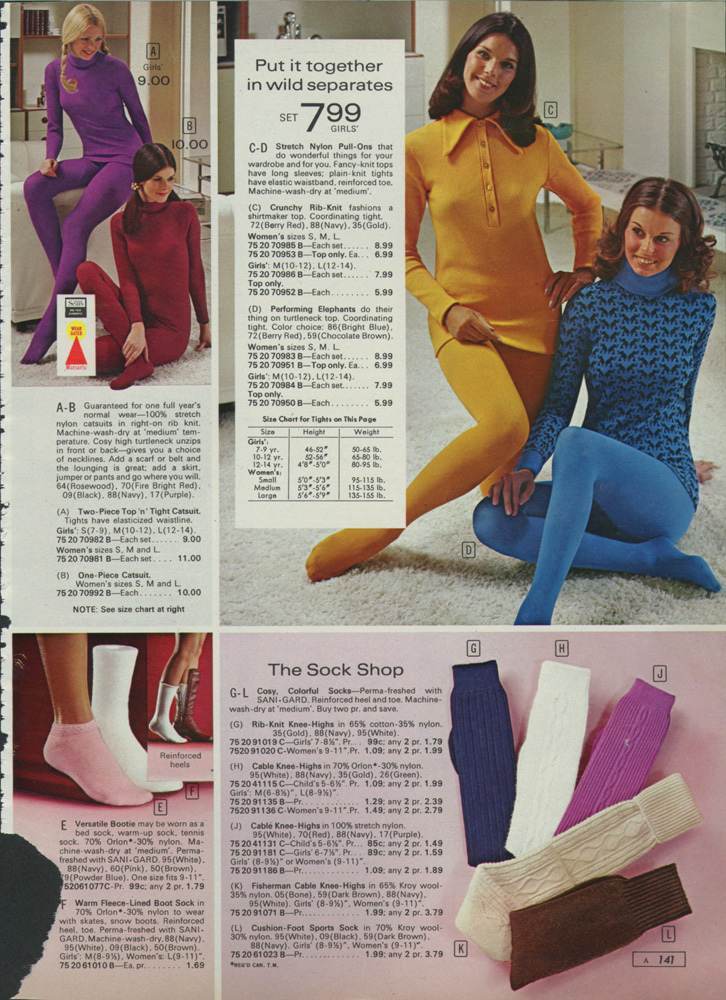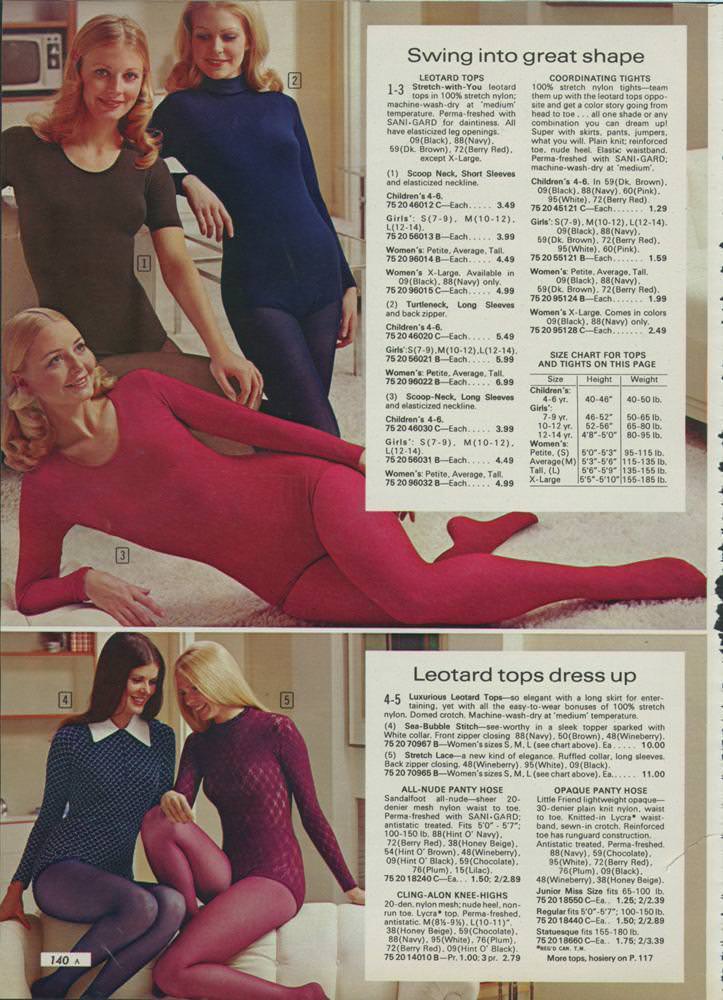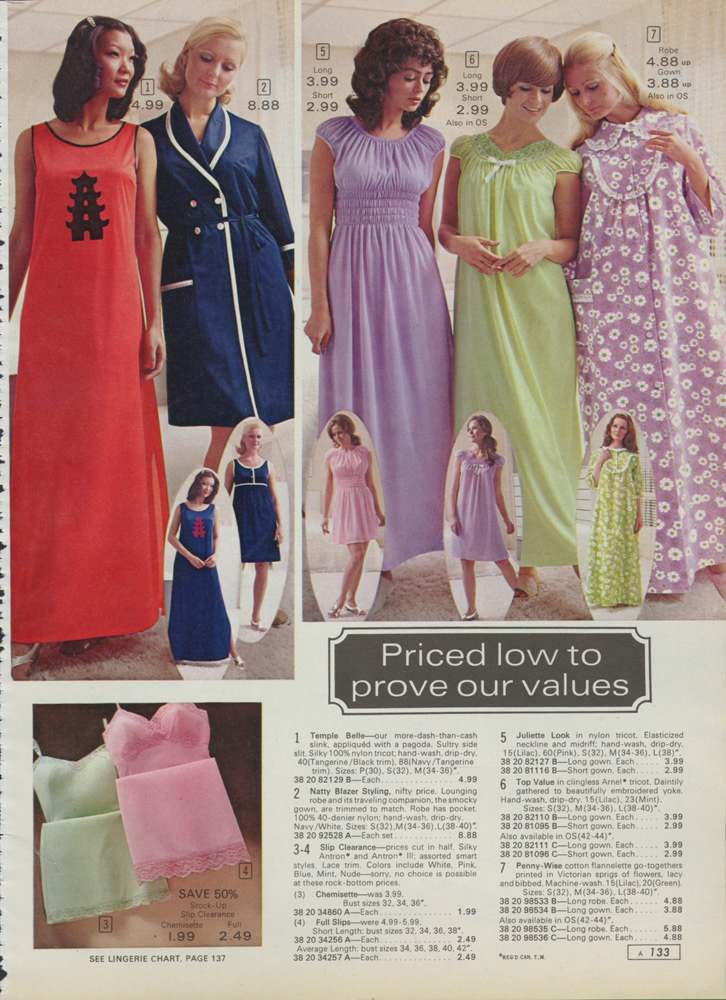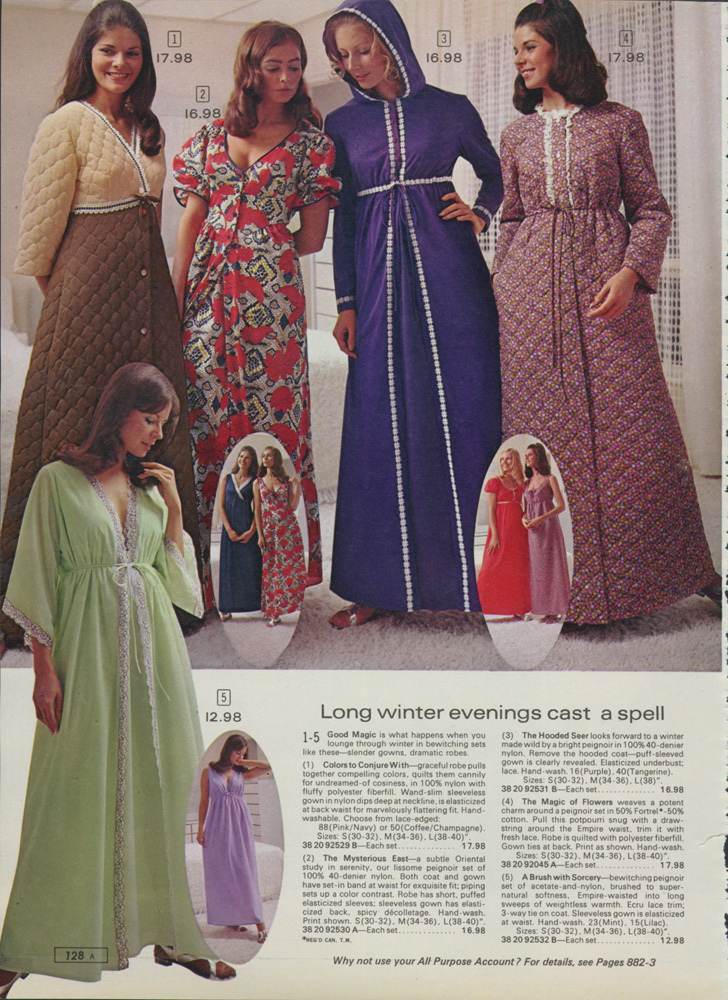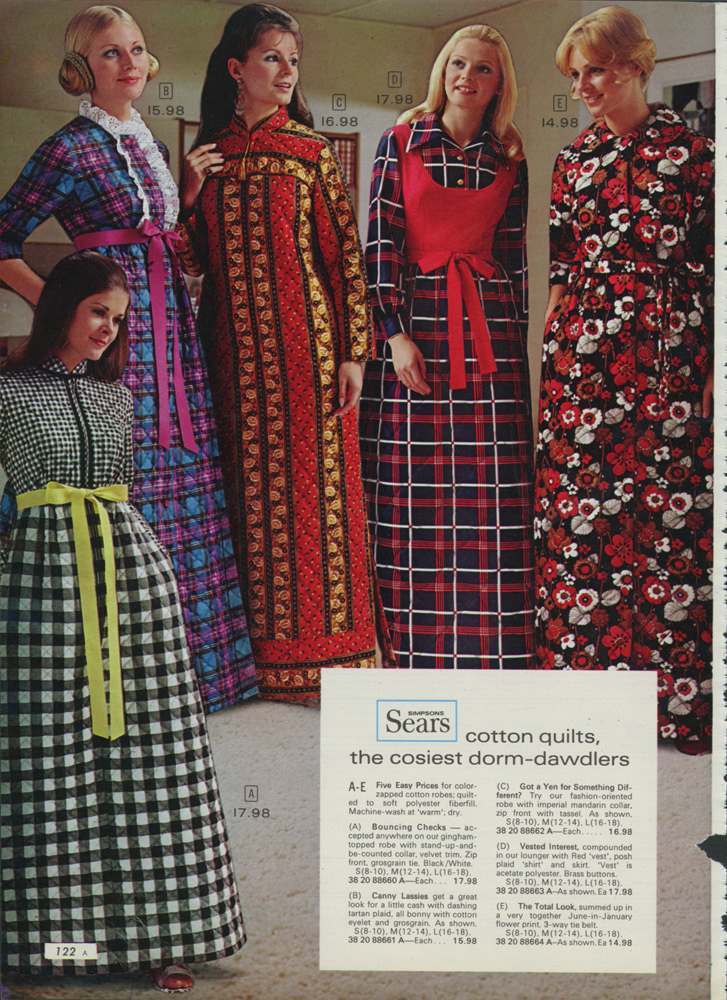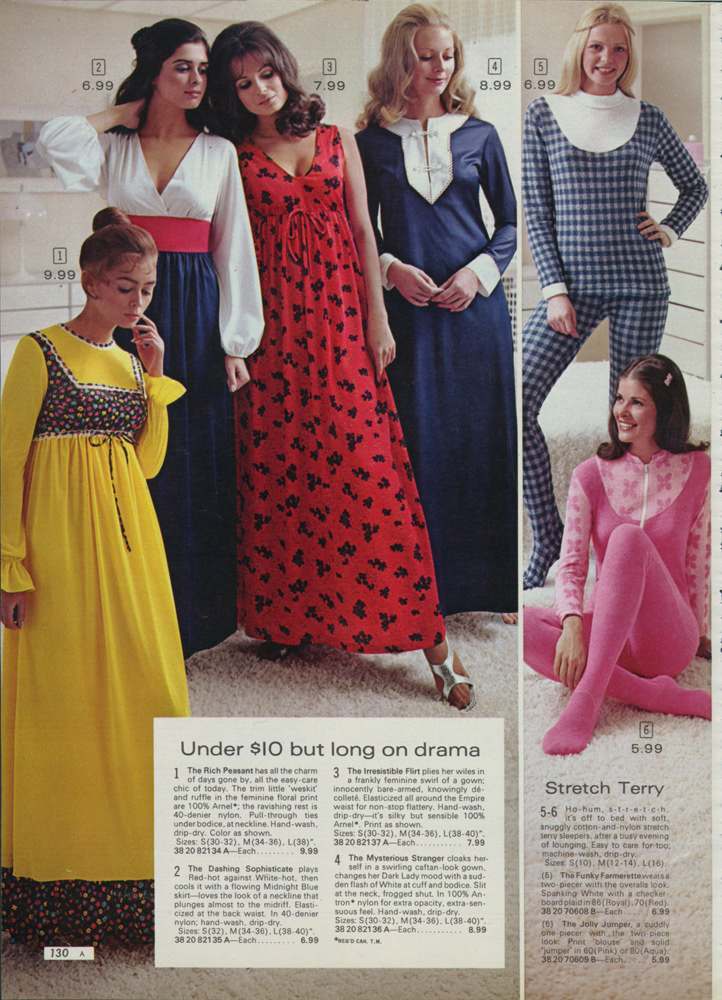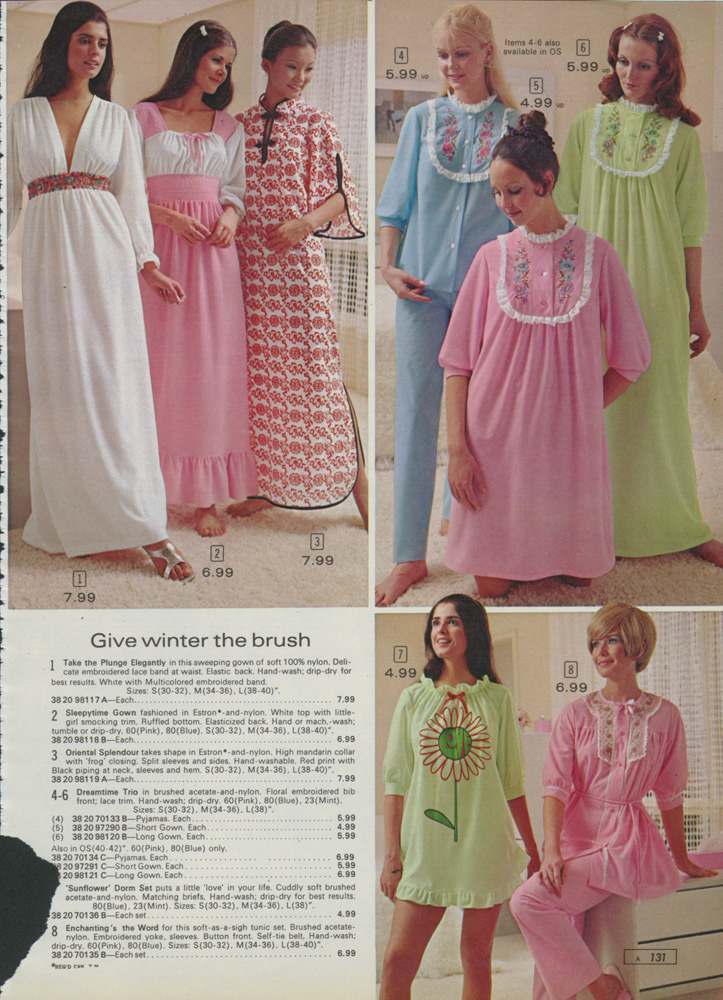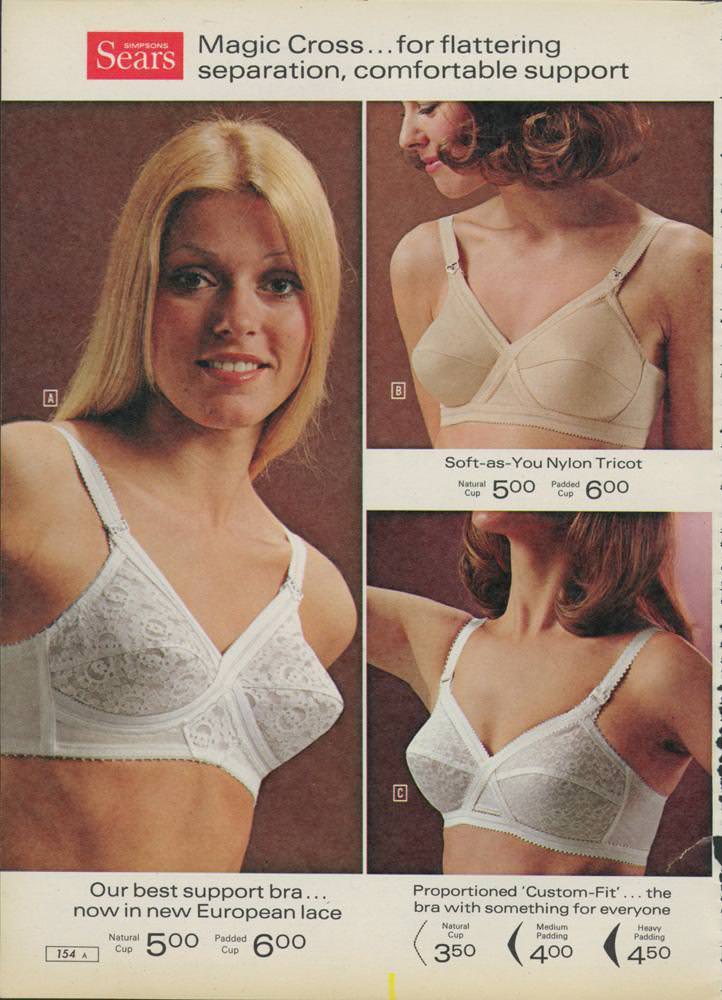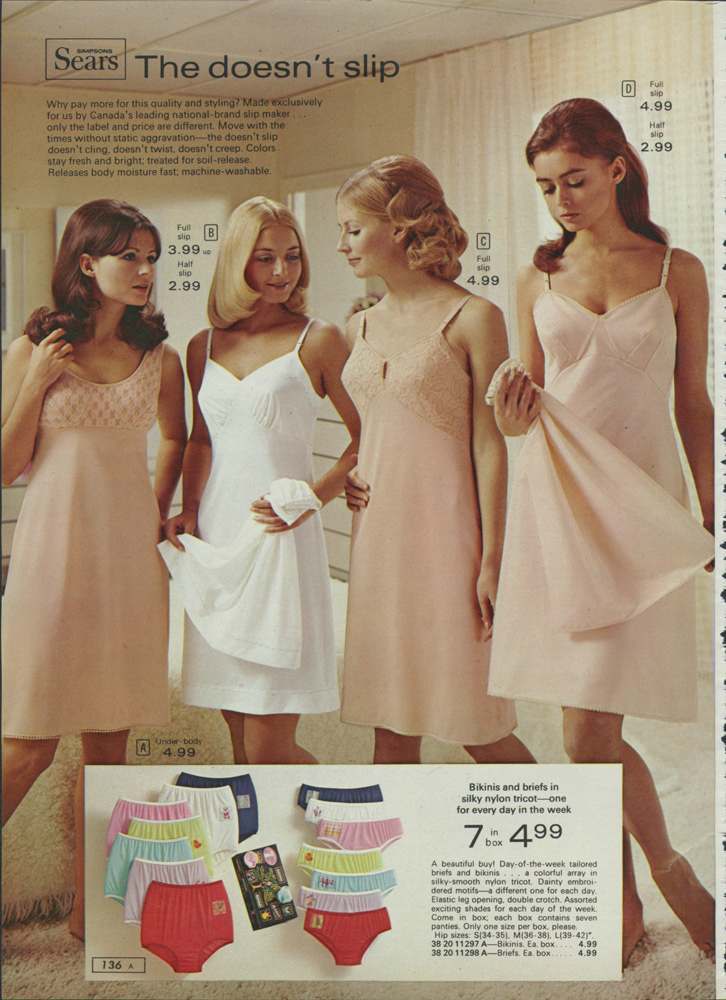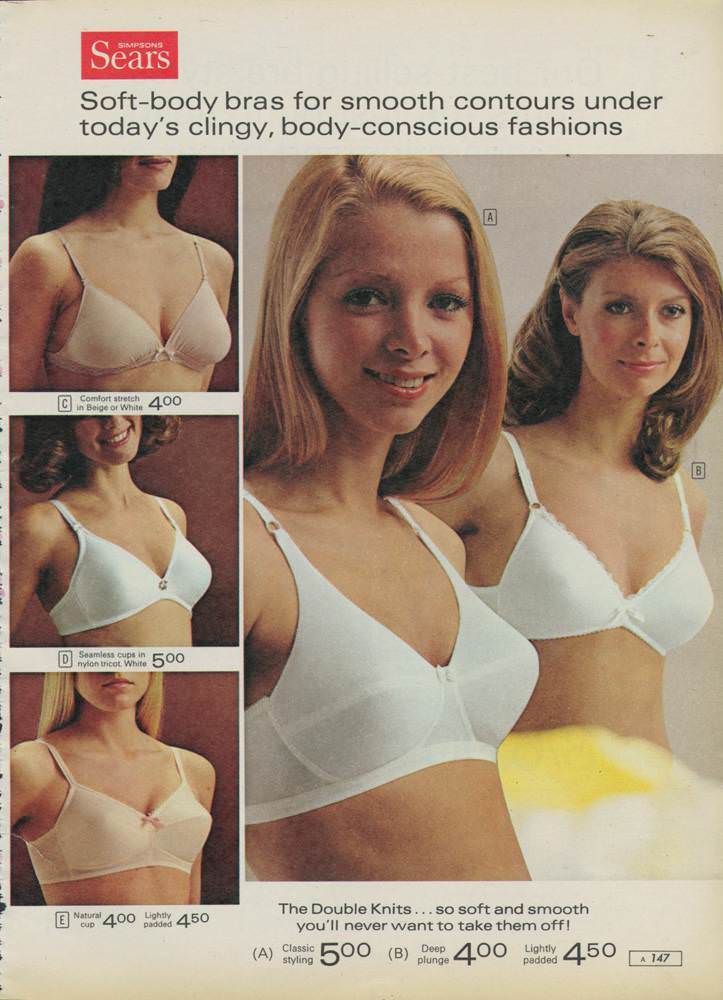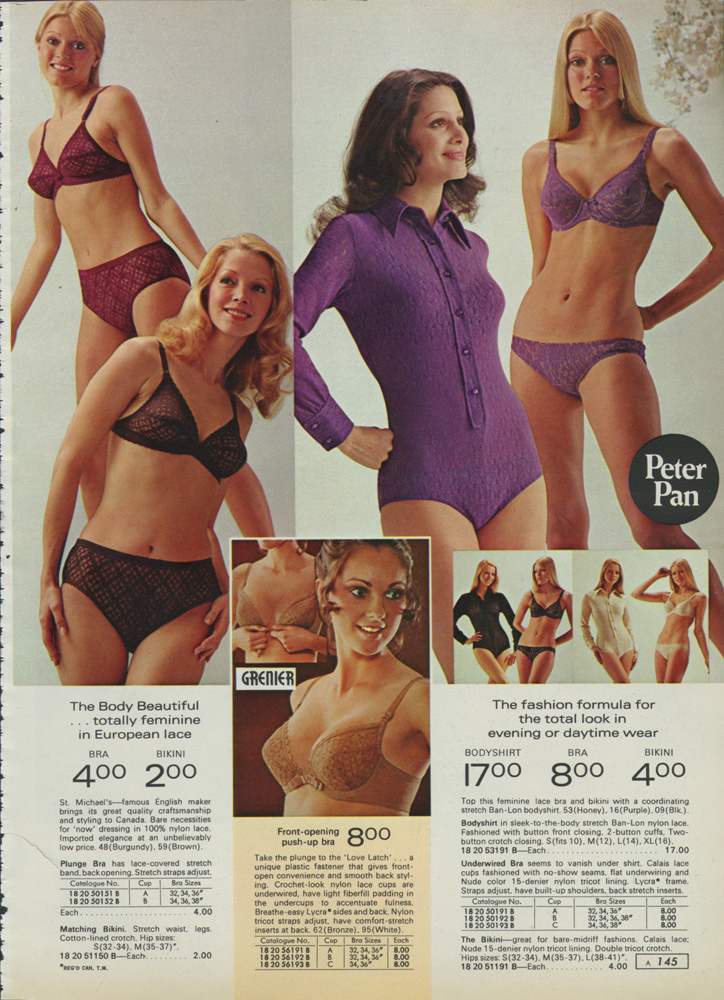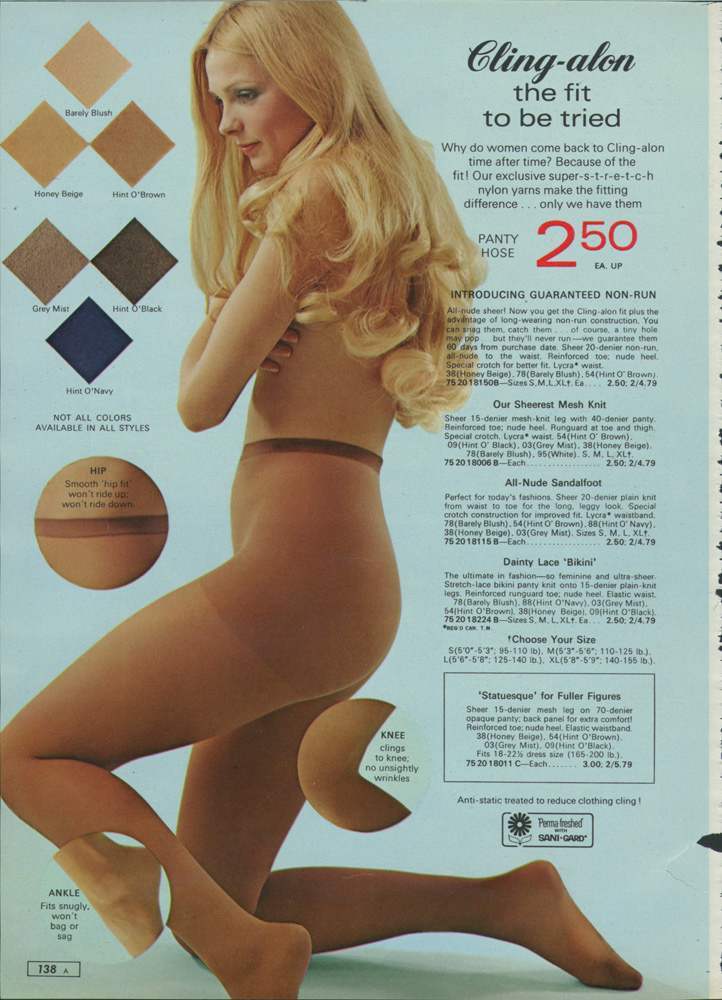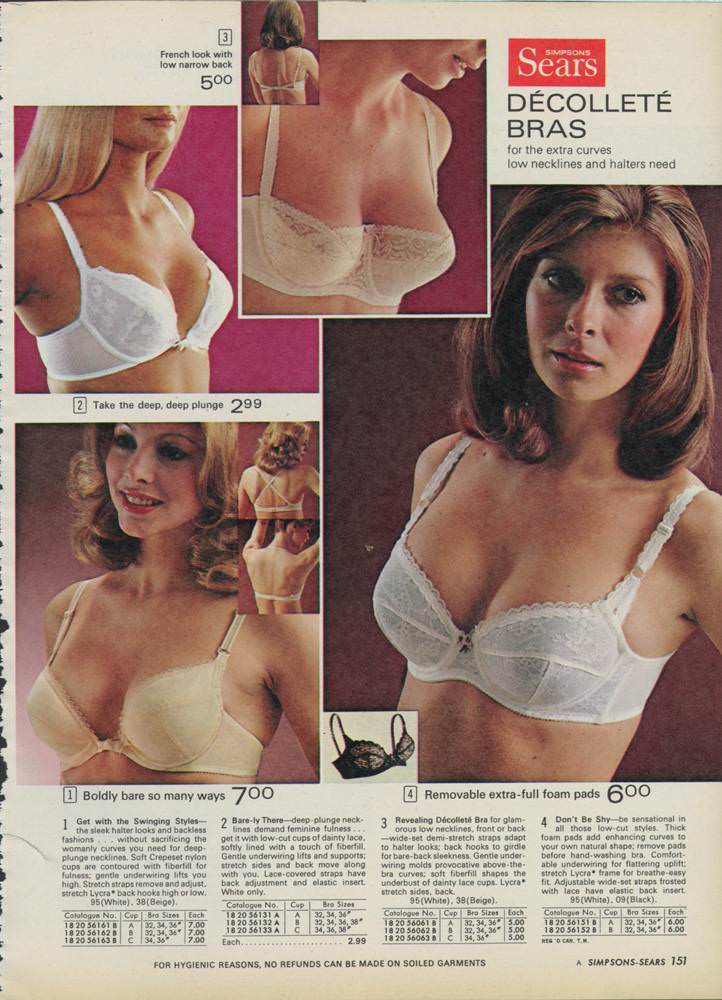In the 1970s, before shopping online became common, many people relied on catalogs to see and buy the latest fashions. These thick books, filled with pictures and descriptions, arrived in the mail and allowed families to browse clothing options from the comfort of their homes.
The following women’s fashion catalog from the Fall and Winter of 1972 showcases the clothing trends that people were wearing or aspiring to wear during that time. This particular season reflected some of the key fashion shifts happening in the early 1970s. The catalog would have featured a wide variety of garments designed for cooler weather.
One noticeable trend evident in a 1972 catalog was the popularity of certain colors. Purple, in various shades, was a prominent color choice for many clothing items that fall and winter. You would see purple dresses, tops, sweaters, and even coats and pants featured in the catalog pages.
The length of skirts was another important fashion detail. In 1972, mini-skirts were still very much in style and widely worn. The hemlines on skirts featured in the catalog pages were typically short, sitting well above the knee. This length had been popular for several years, though fashion trends were on the verge of shifting towards longer skirt lengths soon after this period.
Read more
Another significant change seen in 1970s fashion, and reflected in a 1972 catalog, was the increasing acceptance and popularity of women wearing pants. While dresses and skirts had long been the standard public wear for women, the early 1970s saw slacks becoming much more common and fashionable for various occasions, not just for casual activities. Catalogs showed pants styled for work, social events, and everyday wear.
Beyond these specific trends, a 1972 Fall/Winter catalog would display other common elements of 1970s style. Fabrics like knits were very popular for dresses, tops, and sweaters. Corduroy and blends of synthetic materials like polyester were also frequently used for pants, skirts, and jackets. Silhouettes often included A-line shapes for dresses and skirts, and pants commonly featured a flare at the bottom, sometimes quite wide, known as bell-bottoms. Details like wide collars on shirts and dresses were also characteristic of the era.


